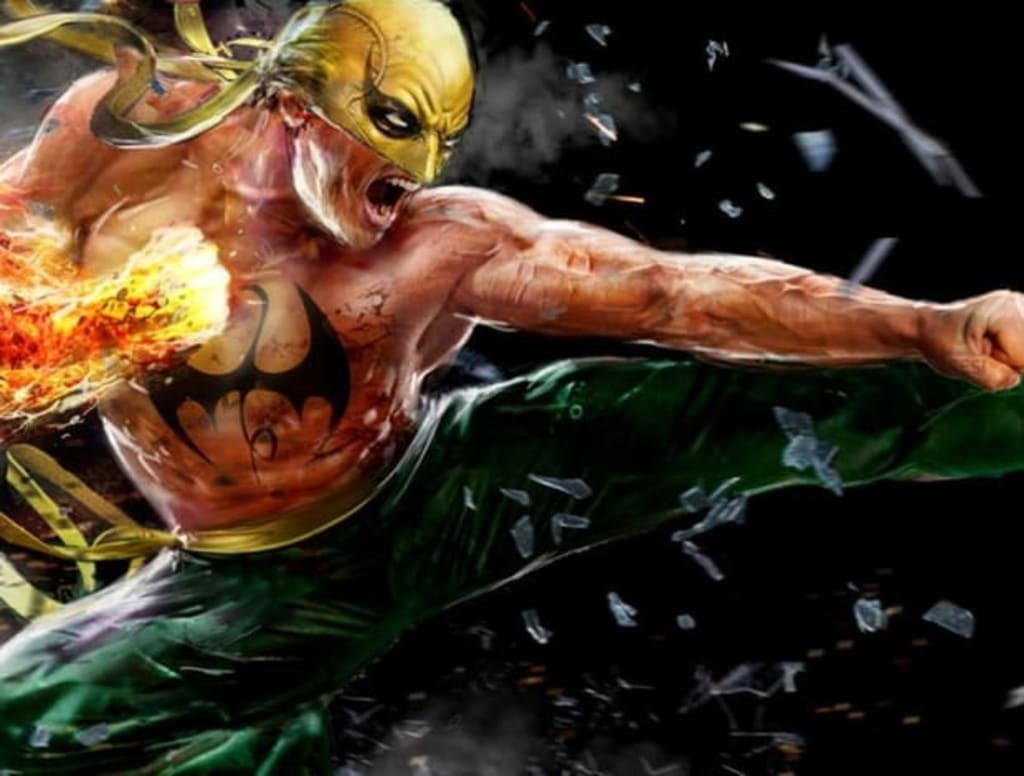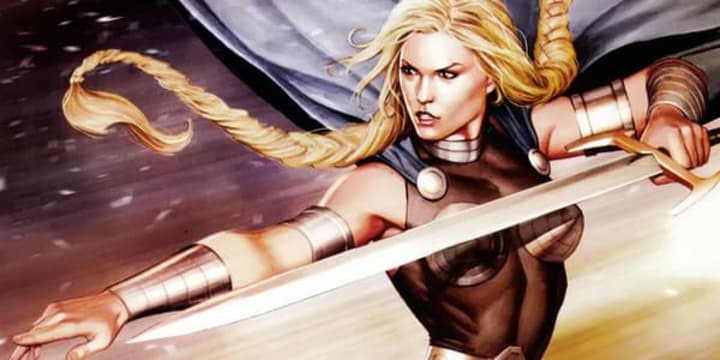
Iron Fist is proving to be Marvel's most controversial series to date, with the Internet pretty much set ablaze with discussion over Finn Jones's casting as the series lead But it's only the latest casting controversy; when rumours swirled that Zendaya would be playing Mary-Jane Watson in Spider-Man: Homecoming, the fury was almost palpable. The reality is, comic book fans take their casting seriously, and the result can be a Twitter storm. There's nothing more controversial than a race swap, raising the odd question: Why do the studios do race-swaps anyway? Here are the reasons...
Comics Traditionally Aren't Diverse

The reality is that the majority of iconic superheroes were designed in a different era. Let's face it, Spider-Man was created two years before the US abandoned segregated water fountains. Back then, the idea of "diversity" was pretty much unthought of.
This led to some serious cases of what's sometimes called "cultural appropriation." This is the process by which a dominant culture absorbs aspects of another culture into itself. For the minority group affected, this feels like a theft, a denigration of their culture. The classic comic book example is Iron Fist, where a white American absorbs the martial arts and mythology of Asian culture; it's a variation on the 'White Savior' trope, and has proved pretty controversial as a result.
Superhero movies and TV shows have to reinvent the characters for the present day — specifically, for an infinitely more diverse era. This leads to a really difficult situation. Some fans, you see, will expect you to correct the mistakes of the past. Two years before Finn Jones's casting as Iron Fist, Keith Chow had kicked off a campaign to have an Asian-American cast in the role. He explained:
"For me, the whole idea of an Asian-American Iron Fist has been less about the character specifically but the trope more broadly. Like you have a ton of these stories already. If you need that story told, go watch The Last Samurai! Go watch The Karate Kid 2! Instead of a white man appropriating the qualities of Asian mysticism, it could have been a story of an Asian-American going back to his parents' homeland as a way of reconnecting with them - a feeling that many second-generation Asian-Americans can relate to."
Meanwhile, many superhero films have added diversity by race-swapping characters. This is usually done by changing the ethnicity of a traditionally white character — think Samuel L. Jackson's Nick Fury, or Michael B. Jordan's Human Torch. Before you argue that Nick Fury doesn't count, because he was black in Marvel's "Ultimate" universe, I can only agree with #Marvel writer Dan Slott:

The common counter is to argue, how would you feel if someone turned a black character, like Black Panther, white? The best response I've seen is on the Time Machine blog. Imagine that this is a jar full of major characters.

Let's begin! [Credit: Time Machine]
Now take two bowls, and fill one to the brim with characters, while giving the other just a handful.

You can see what's happening. [Credit: Time Machine]
You can surely see where this is going. The bowl on the left is full of white characters. The bowl on the right is full of more diverse characters. You can move some characters from left to right without making any appreciable difference to the fact the bowl on the left is full. On the other hand, if you move even one character from right to left, it has a visible and significant impact on the bowl's contents.
The blogger goes on to imagine that a white child is going to be given the bowl on the left, and a black child is going to be given the bowl on the right.
"But before you hand them out you look right into the little black girl's eyes and take two of her seven raisins and put them in the little white girl's bowl.I think she'd be totally justified in crying or leaving and yelling at you. Because how could you do that to a little girl? You were already giving the white girl so much more, and her so little, why would you do that? How could you justify yourself?But on the other hand if you took two raisins from the white girl's bowl and moved them over to the black girl's bowl and the white girl looked at her bowl still full to the brim and decided your moving those raisins was unfair and she stomped and cried and yelled, well then she is a spoiled and entitled brat."
It's a harsh argument, but it's a strong one. If studios followed the original comics completely, we'd have near-all-white-superheroes, with absolutely no diversity. Race-swapping is an effective way of incorporating a much-loved character, while improving representation. What's more, there are precious few characters for whom their "whiteness" is an integral part of their character!
Sometimes Politics Intrudes

Tilda Swinton's Ancient One. [Credit: Marvel Studios]
Now let me really stir the pot, though. Marvel Studios shocked the world when Tilda Swinton was cast as the male mystic known as the Ancient One in #DoctorStrange. Writer C. Robert Cargill reacted to the outrage with real anger, explaining the decision in terms of politics:
"The Ancient One was a racist stereotype who comes from a region of the world that is in a very weird political place. He originates from Tibet, so if you acknowledge that Tibet is a place and that he's Tibetan, you risk alienating one billion people who think that that's bulls**t and risk the Chinese government going, 'Hey, you know one of the biggest film-watching countries in the world? We're not going to show your movie because you decided to get political.'"If we decide to go the other way and cater to China in particular and have him be in Tibet - if you think it's a good idea to cast a Chinese actress as a Tibetan character, you are out of your damn fool mind and have no idea what the f**k you're talking about."
The reality is that the Chinese market is expected to become the biggest movie market in the world by 2020 (yes, exceeding even the US). Marvel decided they couldn't risk getting their film banned - not least because the Chinese government's attitude could easily have led to all Marvel films (possibly even all Disney movies) being banned. Instead, Marvel reinvented the character, and walked into a whole different controversy! It's worth noting that Marvel head Kevin Feige denied this rationale, but frankly I believe the writer.
This is still the exception rather than the norm, but — given the increasing importance of the Chinese market — I suspect we'll see this kind of decision made again soon.
But Is This REAL Diversity?

Will Tiffany Espensen be Silk? Images: Instagram, Marvel Comics
Might as well keep stirring the pot: For all the flak Marvel's getting, the company is actually being really conservative over who they race-swap. Back when most fans believed Zendaya to be playing Mary-Jane, Jason Johnson pointed out:
"Race bending is fine so long as it’s for girlfriends and sidekicks, but the movies are still white-boy fantasy adventures in which the lead remains a straight white male no matter what. And that unfortunate fact can’t be separated from the choice to cast Zendaya as Mary Jane."
It's taken 14 Marvel movies — and just shy of a decade of MCU films — for us to see a black woman in a speaking role. Viewed like that, #SpiderManHomecoming is a step forward, but nothing more than that.
Now, it's worth noting that criticism might not be entirely fair. There are rumors that diversity was low on the priority list of controversial Marvel CEO Ike Perlmutter, and a 2015 corporate restructure pulled Marvel Studios out from under him. What's more, both Spider-Man: Homecoming and #ThorRagnarok are showing far more diverse casts. So realistically, Phase Three may well be seeing Marvel make a fresh start. For Thor: Ragnarok, Tessa Thompson has been cast as the traditionally white skinned and blonde Valkyrie.

The traditional Valkyrie! [Credit: Marvel Comics]
But even Valkyrie just supports the point; Marvel is introducing diversity by race-swapping secondary characters. I can't help seeing that as little more than paying lip-service to the concept.
My hope is that this article has helped you understand why the studios change the race of some characters. The sad truth is that, with most iconic superheroes dating back to a time when the issue of diversity wasn't even on the radar, it's frankly necessary. That said, I'm not satisfied; changing the race of secondary characters is pretty much only a token gesture. My hope is that Marvel and DC will go on to do far better than that.
About the Creator
Tom Bacon
A prolific writer and film fan, Tom has a deep love of the superhero genre.






Comments
There are no comments for this story
Be the first to respond and start the conversation.